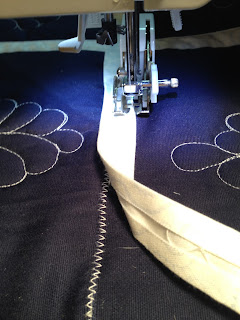I am having a grandson! Another reason to sew!
I cloth diapered my daughter over 30 years ago, and it was really easy with no leaks. Diapers came in packs of 12 from Walmart, and between my baby shower and what I bought, I had over 100 diapers. I used them for burp cloths, loveys, anything and everything. The only waterproof covers were plastic pull up pants which are still made. They used to come in prints and colors, and I especially loved the ruffled rumba pants for under little dresses.
At that time, 10 packs of prefold diapers cost less than $75, and I was all set until she was potty trained.
The diapers came out of the dryer as soft as cotton and as white as snow. I did use bleach and an extra rinse cycle.
I used diaper pins as a closure, but I would have probably have used a Snappi if I knew about them. But the pins are so easy to use.
Who doesn't know how to use a safety pin?
When I looked online at all the new kinds of diapers, and the prices? Yikes!
All the snaps and microfiber versus fleece, organic unbleached, all in one.....
Did I mention the prices?
My head was spinning. Cloth diapers are supposed to save you money, right?
Here in my easy version of a contoured diaper for a newborn. It still needs pins or a Snappi, and a waterproof cover, but is goes on easily with no folding needed.
I had 2 yards of this cotton fabric in my stash, perfect for a boy's diaper.For the inserts, I used cotton towels, cut 4 1/2 inches wide by 2 inches short of the height of the diaper.
The toweling should not be in the top or bottom seams.
Prewash the fabric so your diaper won't shrink after you make it.
1) Decide how big you want the diaper to be- (I suggest reading a lot of the "How to" diaper tutorials on Pinterest before you start).
2) Cut a length of fabric 2" more than the diapers final desired top to bottom measurement. I got 2 diapers from the width of the fabric. If you don't have continuous yardage, you may use 2 rectangles of different fabrics.
Trace on the back side (wrong side) of the fabric.
Use a purple disappearing pen or a pencil to trace a diaper you have (or a disposable) for a pattern-
 |
| Traced pattern |
3) Important!
Open the folded fabric so the traced pattern is only one thickness!
 |
Sorry it's so faint, but the pattern is trace on the lower half of the fabric
|
4) Lay the towel/ cotton insert in between the legs of the diaper, midway between top and bottom.
This is on only one thickness of material, on the WRONG side of the fabric.
The diaper will be turned inside out after being sewn, which makes it softer and stronger.
5) Using a longer stitch length, sew the insert to the fabric.
Insert sewn in
The insert sewn to one side of the fabric
 |
| Right side of fabric after insert is sewn on |
6) Fold the fabric in half, right sides together, so that the traced pattern covers both.
 |
Fabric doubled ready to sew
|
7) Leave a 5" opening in the seam at the top for turning right side out later on.
8) Starting at the mark after the insert, sew a 1/2" seam to the inside of the pattern marking line. Use a very small stitch length.
 |
Start at the purple mark indicating the END of the opening
|
 |
Opening left for turning
|
9) Leaving 1/2 " seam allowance, trim the leg seams.
10) Turn inside out. It's easier if you start turning the bottom tabs first.
Pushing in the bottom corners before pulling the insert through
The opening will turn in naturally. Be sure to catch the edges in you topstitching.
11) Now start sewing with a usual stitch length, right before the opening you left for turning. Stitch about 3/8" from the edge, to keep the edge softer.
 |
| Start topstitching before the opening to sew it closed. |
 |
Stitch over the end of where your stitching began to secure.
All done! |
Thanks and Happy Diapering!



















































